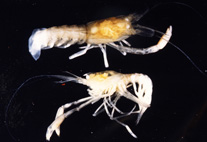Abstract
Descriptions of three new species of the aulopid genus Hime from the central and western Pacific and presumably the easternmost Indian Ocean are presented. Hime surrubea sp. nov., confined to the Hawaiian Island region, has been misidentified in species accounts and faunal lists as H. japonica and although resembling it is separable from that species by its shorter caudal peduncle, slightly larger head, larger eye, especially relative to head size, and slightly smaller pectoral and pelvic fins. Hime capitonis sp. nov. is known conclusively only from seamounts off the southern tip of New Caledonia and Vanuatu, and is distinguishable by its distinctively large head (32.3–35.6% SL) and eyes (orbital diameter 10.8–13.0% SL) and relatively few scales between the anus and anal fin origin (7–9). The Indonesian H. caudizoma sp. nov. is so far known from only 8 specimens, acquired in markets in southeastern Lombok and presumably caught nearby in what would be regarded the eastern reaches of the Indian Ocean. The species is recognisable by its dorsal fin of rather uniform moderate height with nearly straight distal margin and 17 rather than 16 rays, none of which is filamentous in either sex, the second penultimate ray rather than anterior rays the longest in males. Like the other two described here, H. caudizoma has among the largest head and eyes of the family. Observations on the dorsal fin form and other features of H. microps Parin & Kotlyar, 1989 are provided based on a large male specimen collected at Rapa Iti, Austral Islands and a re-evaluation of the original description.

